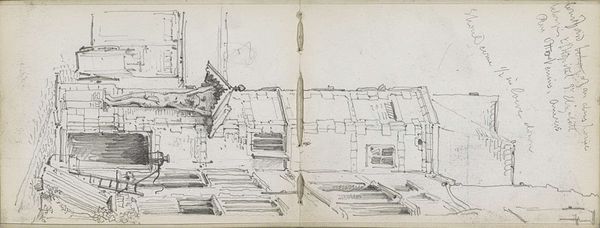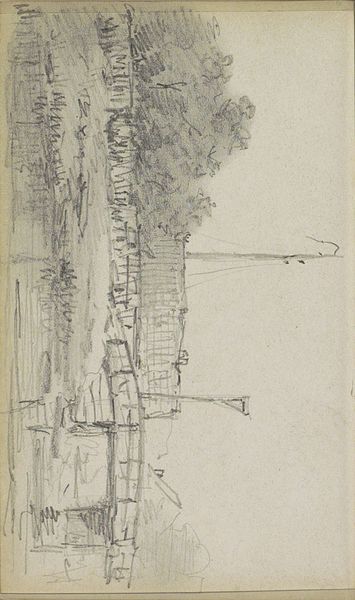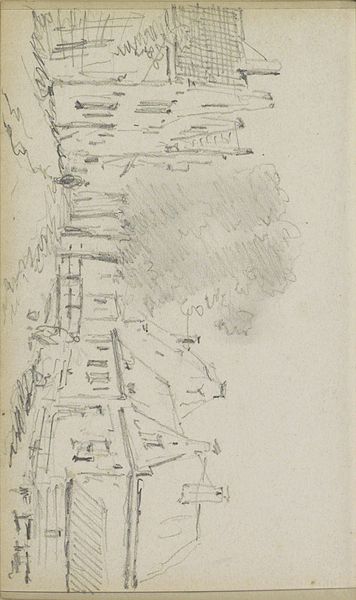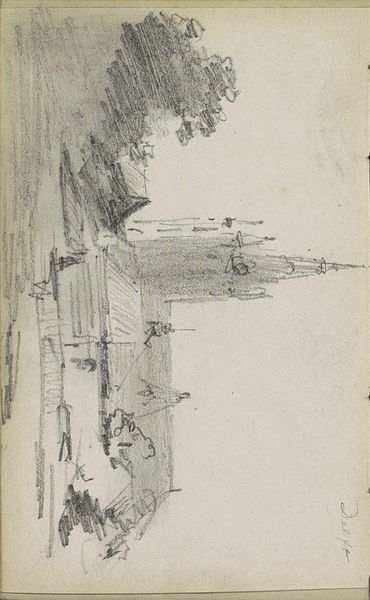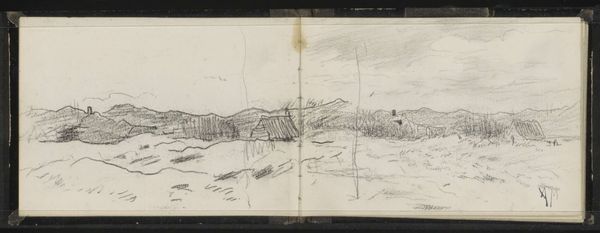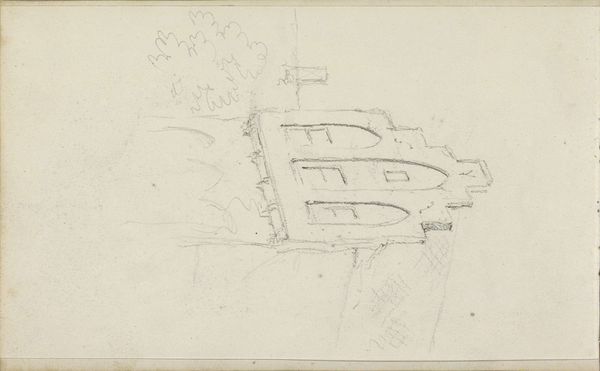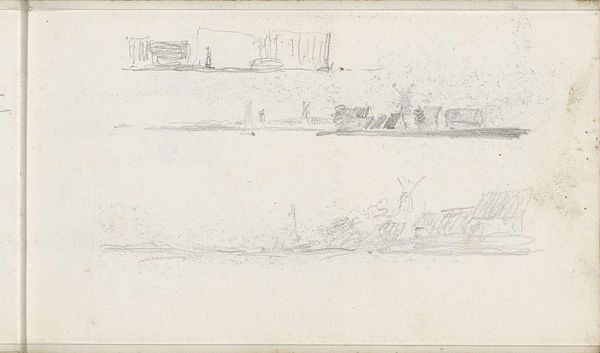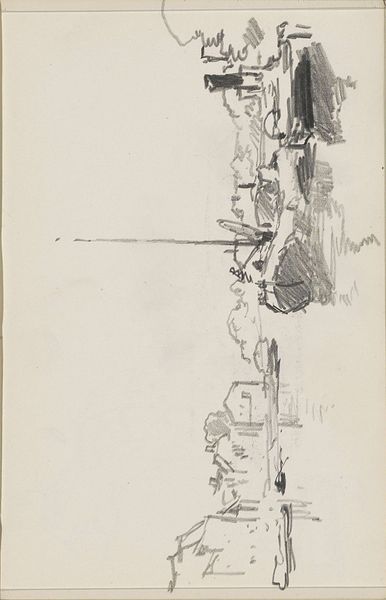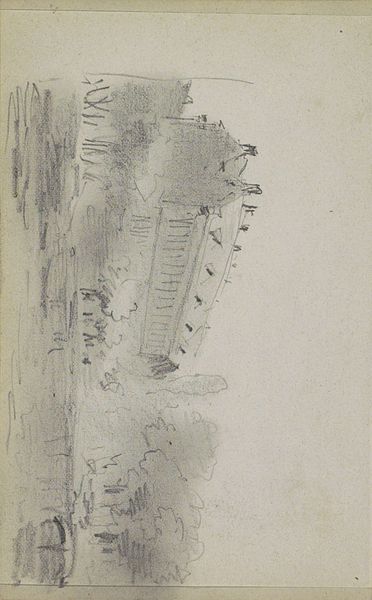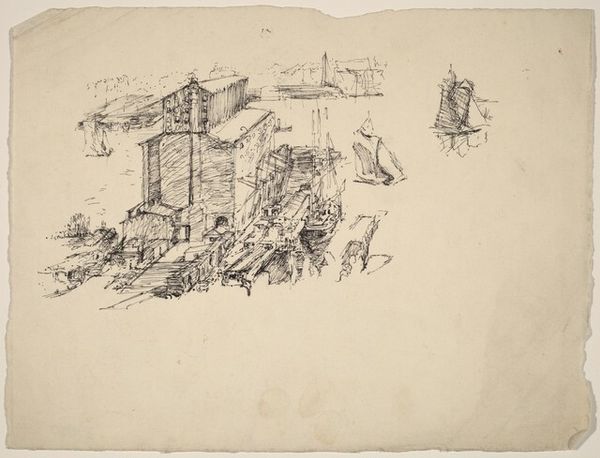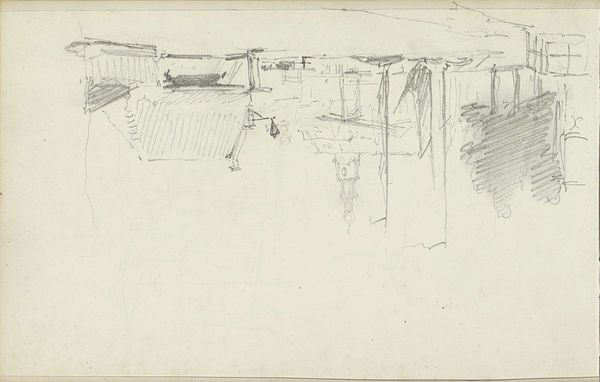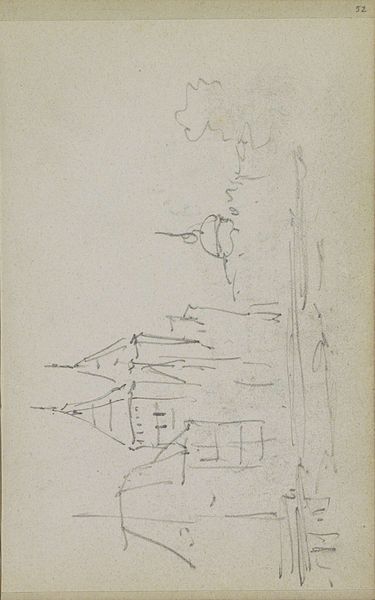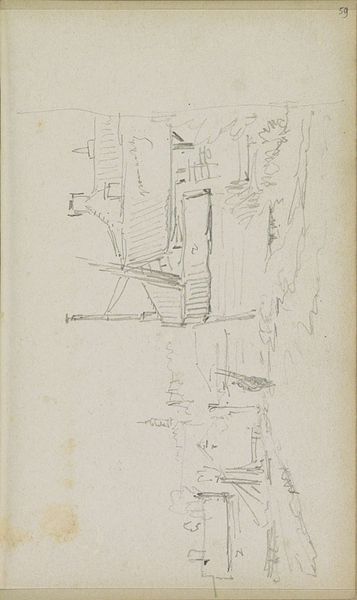
Gezicht op de Zuiderkerk vanaf de Groenburgwal in Amsterdam 1865 - 1913
0:00
0:00
drawing, pencil
#
drawing
#
pen sketch
#
sketch book
#
landscape
#
personal sketchbook
#
idea generation sketch
#
sketchwork
#
pen-ink sketch
#
pencil
#
pen work
#
sketchbook drawing
#
cityscape
#
sketchbook art
#
realism
#
initial sketch
Copyright: Rijks Museum: Open Domain
Curator: This pen and pencil drawing, titled "Gezicht op de Zuiderkerk vanaf de Groenburgwal in Amsterdam," captures a cityscape view dating between 1865 and 1913. It is currently held at the Rijksmuseum. Editor: It has a quiet intimacy to it, wouldn’t you say? Almost like overhearing a whisper across the water. Curator: The composition draws you in – you're right. It has an unusual immediacy. We know from its provenance as part of a sketchbook, it feels as though we are peeking into the artist’s private visual diary. This type of rapid sketch often served artists for planning larger works in the studio, so it lacks some of the conventionality of more "finished" works meant for the gallery. Editor: Churches always have potent symbolism, and this one is presented almost as if it’s emerging from the landscape itself, part of the warp and weft of daily life. Is there anything particular about the Zuiderkerk that adds to its meaning? Curator: Well, completed in the early 17th century, the Zuiderkerk was one of Amsterdam's first churches built specifically for Protestant worship. In its day, it symbolized the religious and cultural shift happening in the Netherlands. Later, it functioned as a place of refuge and gathering during times of hardship. Its enduring presence makes it more than just a building. Editor: The way the artist renders it makes it feel like that endures today. The soft pencil work gives it an almost ghostly quality, hinting at layers of memory and history embedded in the stonework. Curator: Absolutely. And beyond the religious shift, this area itself had become central to Amsterdam’s growing merchant class at the time the church was founded. This perspective from the Groenburgwal would have situated the church amidst the bustling activity of trade and commerce. The drawing invites us to reflect on Amsterdam’s complex narrative. Editor: So we’re not just looking at a pretty picture; we’re looking at a locus point of huge social change rendered through visual language? Curator: Precisely! It serves as a quiet reminder of Amsterdam’s evolution. Editor: Knowing its social relevance certainly deepens the initial sense of the church looming out of the ether. A lot more weight to it than initially appears!
Comments
No comments
Be the first to comment and join the conversation on the ultimate creative platform.

